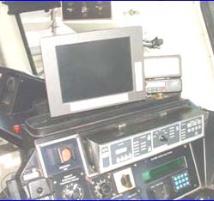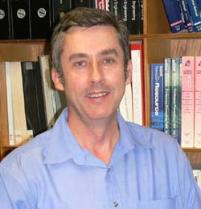Technology lets train drivers see further ahead
Published on 19 July, 2006
Drivers of very long trains – such as those hauling coal - might be a few kilometres ahead of the final wagons under their care.
Furthermore, trains are very heavy vehicles and changes in speed take time. To operate efficiently, drivers must also anticipate future conditions.
Driver's currently rely on their memory of training simulations and track conditions to ensure safety and good train management. 'Knowing the road' is vitally important.
 Wouldn’t it be great if they had a monitor screen showing what was happening to all the wagons behind them? In addition, what about the track ahead? Thanks to Queensland researchers, they will soon have such a screen and it will actually predict the whole train’s condition 50 seconds into the future.
Wouldn’t it be great if they had a monitor screen showing what was happening to all the wagons behind them? In addition, what about the track ahead? Thanks to Queensland researchers, they will soon have such a screen and it will actually predict the whole train’s condition 50 seconds into the future.
And as a bonus, there won’t need to be any monitoring gear on the wagons.
The proposed system uses train speed combined with prior knowledge of track conditions via a mathematical formula to create a ‘virtual train’ in the computer.
The Intelligent Train Monitor then provides the driver with ‘predictive’ information – which arrives ahead of time to indicate whether or not the train’s speed will exceed limits or if in-train forces will be too high.
Project leader Dr Colin Cole, of Central Queensland University’s Centre for Railway Engineering, said large coupling forces resulting from surges and impacts have the potential to damage equipment or cause derailment.
Different sections of the train can also be subject to different speed limits.
“The challenge of driving long trains is that it is almost impossible for drivers in the lead locomotive to sense changes in the rear sections,” he said.
“This system will not only improve driver awareness and train safety, but also create the ability to reduce surges and impacts, improving wagon life and reducing energy consumption”.
Dr Cole said the research team will produce 4 prototype units to be tested and adapted to different locomotive and train operations.
 “There is great potential to export this technology and further cement Queensland’s position as a major rail innovator,” he said.
“There is great potential to export this technology and further cement Queensland’s position as a major rail innovator,” he said.
CQU has welcomed $400,000 in funding over 2 years to develop the Intelligent Train Monitor System; $200,000 has come from the Queensland Smart State Innovation Projects Fund (Research-Industry Partnerships – Near to Market Projects) and will be matched by QRNational. CQU and QR National will each contribute $40,000 worth of in-kind support over 4 years.
Dr Cole and a team of staff developed the prototype system as part of the Train Dynamics Management Project (1999-2005) which was sponsored by QR. Staff still at CQU's Centre for Railway Engineering from this program include: Mitchell McClanachan; Scott Simson; Chris Bosomworth; Mark Hayman; Trevor Ashman; Grant Caynes and Bryan Powell.

